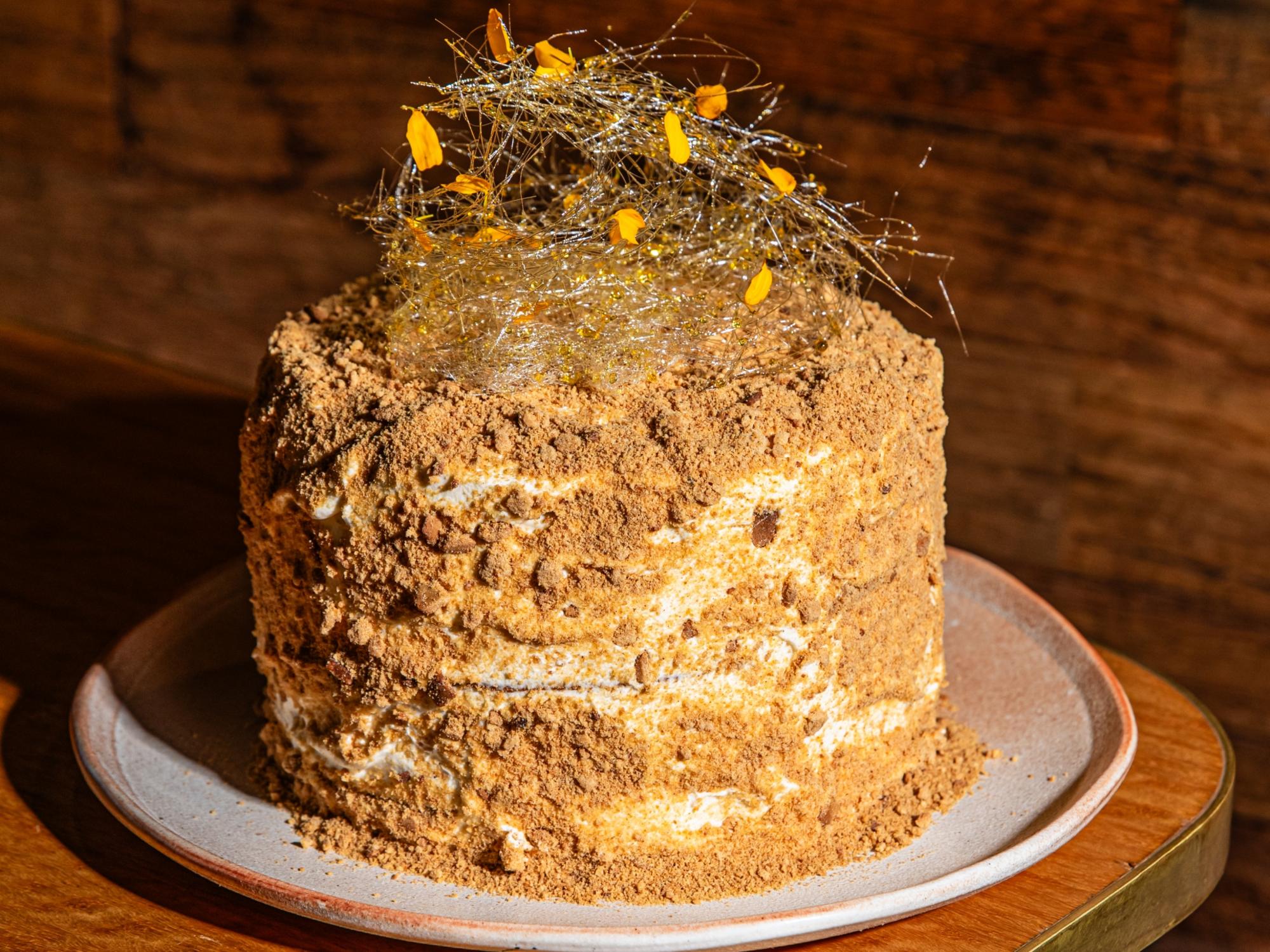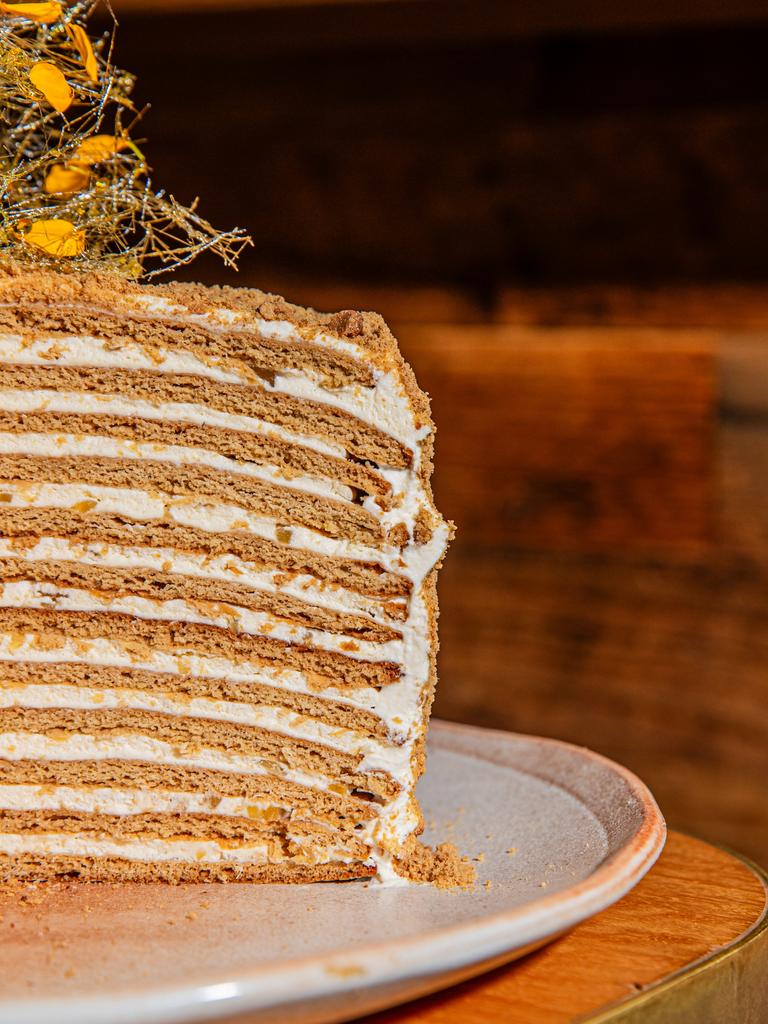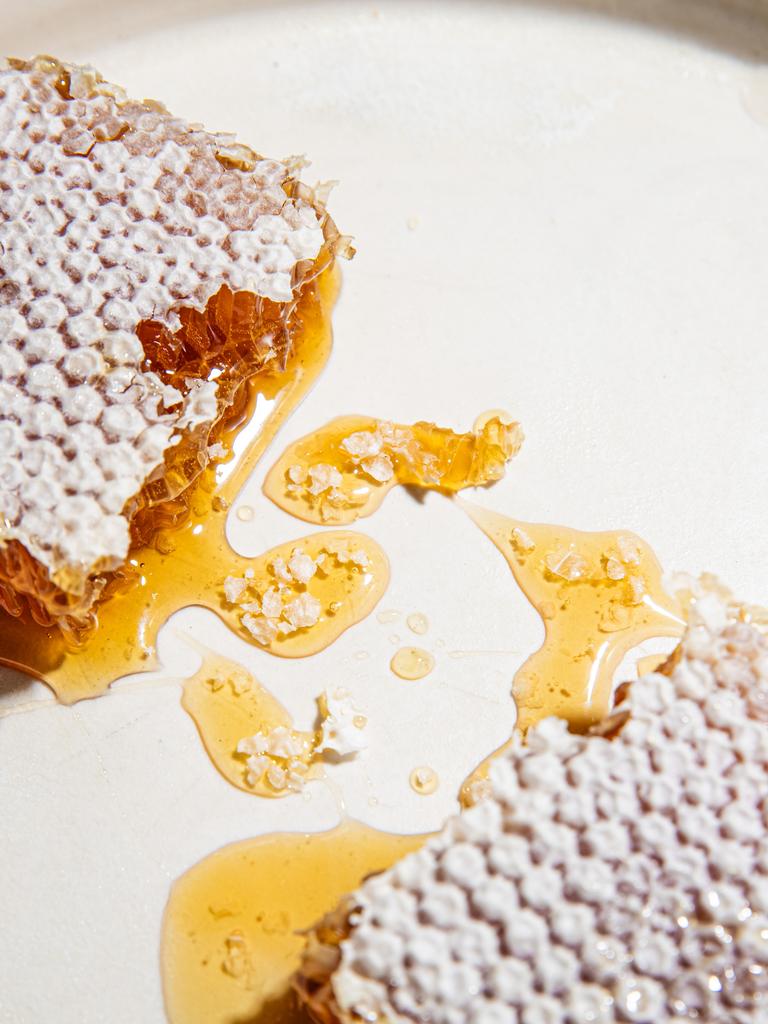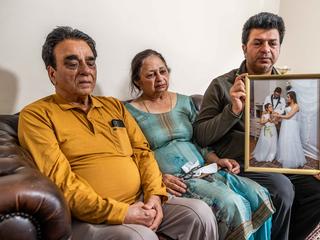Honey is nature’s camera – a unique collaboration between the bees and the flowers and a snapshot of a time and place, recording the impact of weather events such as droughts, floods and bushfires.
This natural sweetener captures the very essence of blossoms and the tireless industry of bees, with a flavour that varies tremendously depending on its botanical origin. It is a constant reminder that we are lucky to have such extensive areas of native Australian bush, whose flowers annually produce large quantities of pollen and nectar. Whether it be bloodwood, mallee, yellow box, acacia, red stringybark, orange blossom or manuka, each species imparts its unique characteristics to every spoon of liquid sunshine. Colours vary from a light golden caramel to a deep amber, with aromas ranging from butterscotch, vanilla and rose through to a dark toffee with smoky, earthy undertones and notes of eucalyptus and warm spice.
Some other recipes you may like:
- Charlotte Ree’s famous Basque cheesecake
- Lennox Hastie’s upside down orange cake
- Elizabeth Hewson’s chocolate hazelnut loaf
With so many different types of honey available, it is sometimes hard to see the forest for the trees or tell the honey from the bees. It has grown to become a billion-dollar industry, with some unscrupulous players keen to turn honey into money. Whereas great honey is complex and full-flavoured, the commercial honey industry tends to market honey as a clean, syrupy liquid, which is generally a sign that it has been over-processed with little residual health benefits. In some instances, bees have even been fed sugar solution or corn syrup with the aim of speeding up and increasing production. Raw, real honey is a wild product full of friendly bacteria and enzymes which have been proven beneficial to our health. Unfiltered particles include propolis, royal jelly and bee bread, which provide this golden elixir with all its medicinal properties, so don’t shy away from cloudy honey. Honey’s natural composition includes a low water content and high acidity, both of which inhibit the growth of bacteria and moulds. In certain traditional cuisines, honey has been regarded as a natural preserving agent for thousands of years, and the Egyptians even used it for embalming.
But back to cooking, where this liquid gold really shines. A simple drizzle of honey can elevate the simplest of dishes whether sweet or savoury.
When I was 16, I was sent on a German exchange but somehow managed to end up staying with a Russian family who, except for their teenage daughter, did not speak much German or English. While we managed to communicate this cross-cultural exchange through a mix of broken German, basic Russian and plenty of gestures, food has always been my favourite language. I had recently started working part-time at a local restaurant back home and so naturally gravitated toward the kitchen, my happy place. The mother was a wonderful cook, making dumplings and broth, bread and rich stews and of course cakes, including my first Russian honey cake, a memorable highlight.
I remember watching as she patiently rolled out the sweet dough into thin, delicate biscuits that were carefully baked before being layered with a generous spread of honey and sour cream. Left to sit in the cool confines of the refrigerator overnight, the biscuit softened, creating a rich, creamy cake-like consistency, its many magical layers only revealed upon slicing. Russian honey cake is an ode to the art of layering and a triumph of simplicity transformed into grandeur – much like honey itself.
Honey cake
Ingredients
- 160g honey
- 80g unsalted butter
- 20g caster sugar
- 1 teaspoon water
- 3 eggs
- 1 teaspoon grated nutmeg
- 1 teaspoon mixed spice
- 1 teaspoon cinnamon
- 1 teaspoon bicarbonate of soda
- 410g plain flour
- For the frosting
- 500g cream
- 500g crème fraiche
- 60g crystallised ginger, finely chopped
- 200g honey
Method
- Heat 80g honey with the butter and sugar in a pan until melted and the sugar has dissolved; allow to cool slightly. Heat the remaining 80g honey over a high heat, allowing it to froth, and stirring occasionally; wait until it reaches a dark caramel colour then remove from the heat, add 1 teaspoon of water, stir, and allow to cool slightly. (Burning half of the honey in this way adds a further caramelised depth and a touch of bitterness to the floral sweetness.)
- Combine both honey mixtures in a bowl, and once it has cooled slightly (80C or below) whisk in the eggs, spices and bicarbonate. Fold in the flour gradually, in batches, to achieve a clay like consistency, adding more flour if required. Cover and allow to rest in the fridge for 30 minutes before rolling. Divide the dough into 13 balls weighing approximately 70g each.
- Roll each ball into a circle 18cm in diameter, approximately 2-3mm thick, using a plate or bowl as a guide. Transfer to baking sheet and bake at 180C for 6 minutes, rotating your tray halfway through cooking. You should be able to bake at least 2 circles at once, depending on the size of your oven and baking tray. Continue rolling and cutting while each batch is baking.
- Repeat until you have 12 layers, baking any leftover dough to use for crumbs. Allow to cool on a wire rack. Whisk the cream and crème fraiche to a soft peak consistency. Gently fold through the ginger and honey.
- Place a biscuit layer on a plate or board, and use a spatula to top with a layer of the honey cream about as thick as the biscuit; place the next biscuit on top and do the same with that. Repeat until the stack is built.
- Using your hands, break any unused biscuits to form crumbs. Cover the top and sides of the cake with the remaining honey cream, before covering all over with the crumbs (they’ll stick to the cream).
- Refrigerate for at least 10-12 hours or overnight to allow the biscuit to absorb the moisture from the cream and soften. Decorate it if you wish before serving – I like to use caramelised spun sugar (like a little beehive) but fresh strawberries or raspberries would also work well. Serves 8-10
Topics
8 Comments
Hi Emma










